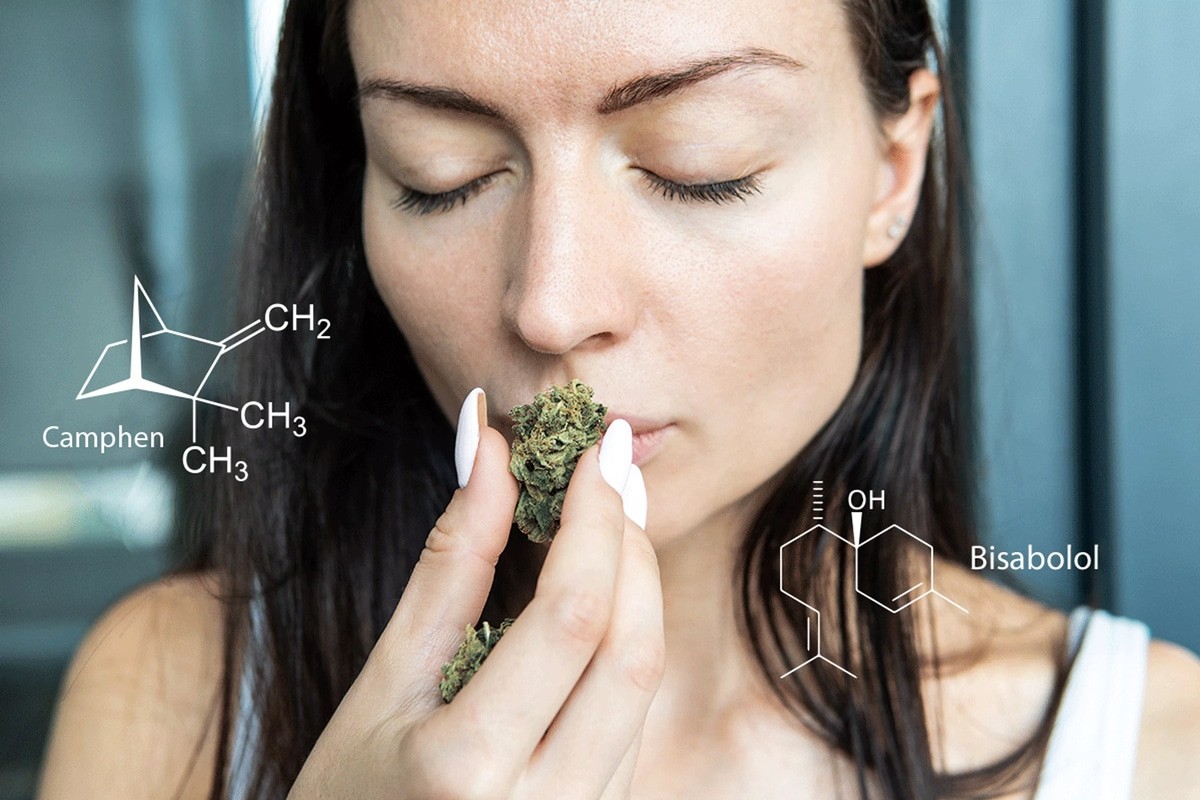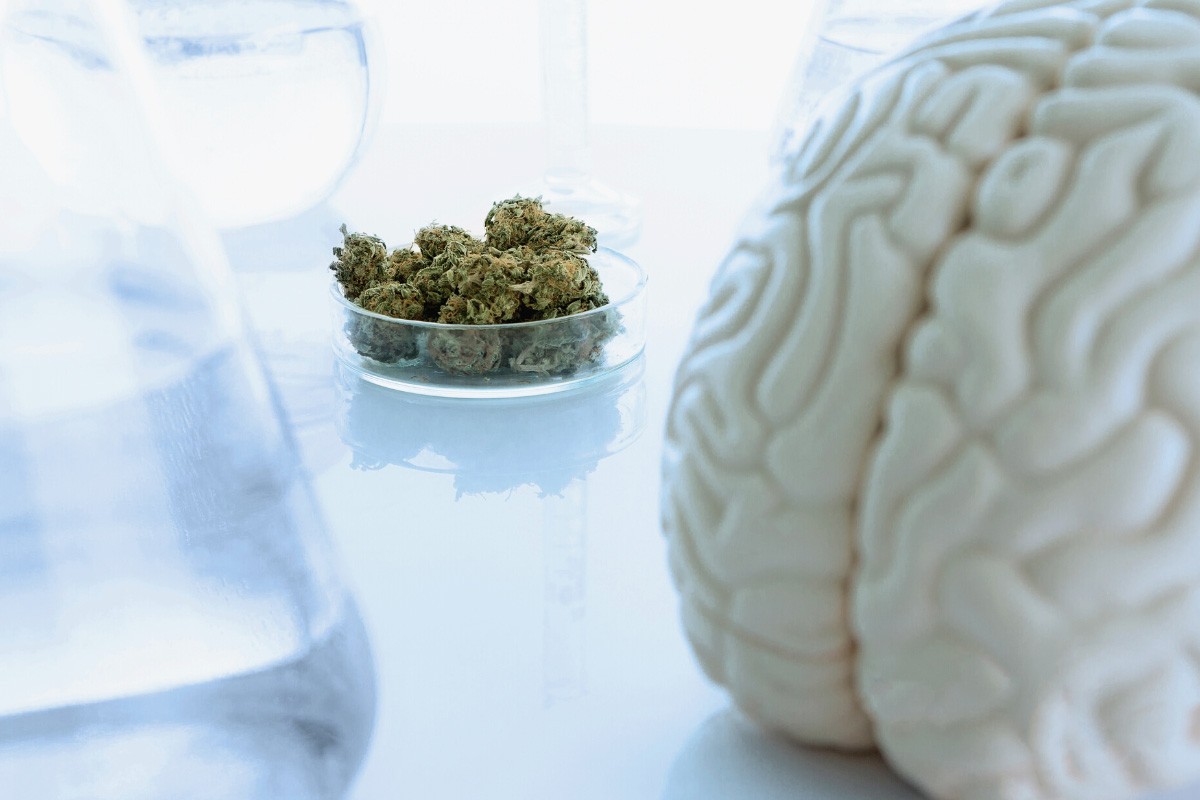Cannabis contains other substances besides cannabinoids, including the so-called terpenes. These chemical compounds are found in all plants and are responsible, among other things, for the colors and aromas (smell, taste) of the individual varieties. Some terpenes are processed into dyes, pesticides or cleaning solutions. Others are said to have medicinally effective properties that could also be used in cannabis.
What is the function of terpenes?
Terpenes are chemical compounds in plants that occur in high concentrations, especially in the flowers, and give them their typical odor. Originally, they probably served to attract insects so that they would pollinate the plants and thus ensure their survival, but also to protect them from difficult climatic conditions and pests. What function they perform for humans is still largely unexplored, even though terpenes have increasingly become the focus of scientific attention in recent years. A practical example of the use of terpenes is aromatherapy, in which fragrances are used very specifically to achieve a certain effect.
It is assumed that, as ingredients in cannabis, they can enhance or alter the effect of the cannabinoids they contain – depending on their composition. This could at least explain why, for example, two cannabis varieties with the same THC content can have different effects.
Do terpenes have an intoxicating effect?
Terpenes themselves do not have an intoxicating effect. However, they can still be psychoactive to a certain extent by enhancing the intoxicating effect of THC. Scientists speak in this context of the so-called entourage effect: This effect refers to the – compared to the individual ingredient – enhanced effect through a combination of ingredients. In the case of cannabis, terpenes play an important role in this context, as many of them are said to be medicinally effective themselves or to be able to influence the effectiveness of cannabinoids such as THC or CBD.
Which terpenes are there?
So far, about 400 different terpenes are known in cannabis alone, but their properties and effects are far from being conclusively researched. So far, it is only certain that all terpenes have a typical odor and can be attributed certain (partly still unknown) effects [1]. The best-known terpenes to date include (in alphabetical order):
Bisabolol
Bisabolol smells like tea tree oil and chamomile. It is said to have an analgesic effect and help reduce skin irritation and inflammation.
Caryophyllene
Caryophyllene has a peppery, spicy note and is found not only in cannabis, but also in cloves and cinnamon. It is said to help heal ulcers, reduce anxiety, and may reduce depressive symptoms [2]. Among other things, the terpene is used in insect repellents for prevention, but also for the treatment of malaria [1].
Eucalyptol
Eucalyptol is contained – as the name suggests – in eucalyptus, but also in mint. With its refreshing and invigorating note, it is said to have an anti-inflammatory and antibacterial effect.
Humulene
Humulene has an earthy, woody aroma that is found in hops and cloves and is reminiscent of their smell. The terpene, which is also found in ginseng and sage, is said to have anti-inflammatory and energizing effects. In addition, it is said to curb appetite and can also be used as an anti-cancer agent [3].
Limonene
Limonene is one of the most abundant terpenes, found in oranges and peppermint, among others, but also in juniper. It produces a tangy citrus note that is said to lift mood and relieve stress. In animal studies, limonene has been shown to have anxiety-relieving effects [4] and may be used as an anti-cancer agent [1]. In cannabis products such as CBD oil, limonene has another positive effect: it is said to be able to increase the absorption rate of the other terpenes here.
Linalool
Linalool is not only a typical terpene of cannabis, but with its floral note also contained in many plant species, for example in roses, lavender, coriander, mint and cinnamon. The smell is said to have a relaxing effect, lift the mood and have an antidepressant effect [5]. Therefore, this terpene is often used in aromatherapy.
Myrcene
Myrcene is one of the most widespread terpenes and can be found in various (citrus) fruits, herbs, flowers (geraniums) and in balsamic, among others. In cannabis, however, it is the smallest terpene. With its earthy aroma, it is said to have a calming effect, reducing anxiety and improving sleep problems. It is also said to have antibacterial and antifungal properties [1].
Ocimen
Ocimen smells like a mixture of basil, parsley and mango. It is said to have anti-inflammatory, antibacterial and antifungal properties, among others [6].
Pinene
Pinene produces – as the name suggests – an intense odor of pine or pine trees, which is immediately recognized. The terpene is said to have analgesic and memory processes, antidepressant effects [5] and can be used against cancer [1].
Terpinolene
Terpinolene smells like a mixture of conifers, apples and cumin. The terpene is found in lilac and linden flowers, among others. It is said to have a calming effect [7], but also antifungal and antibacterial properties [8].








